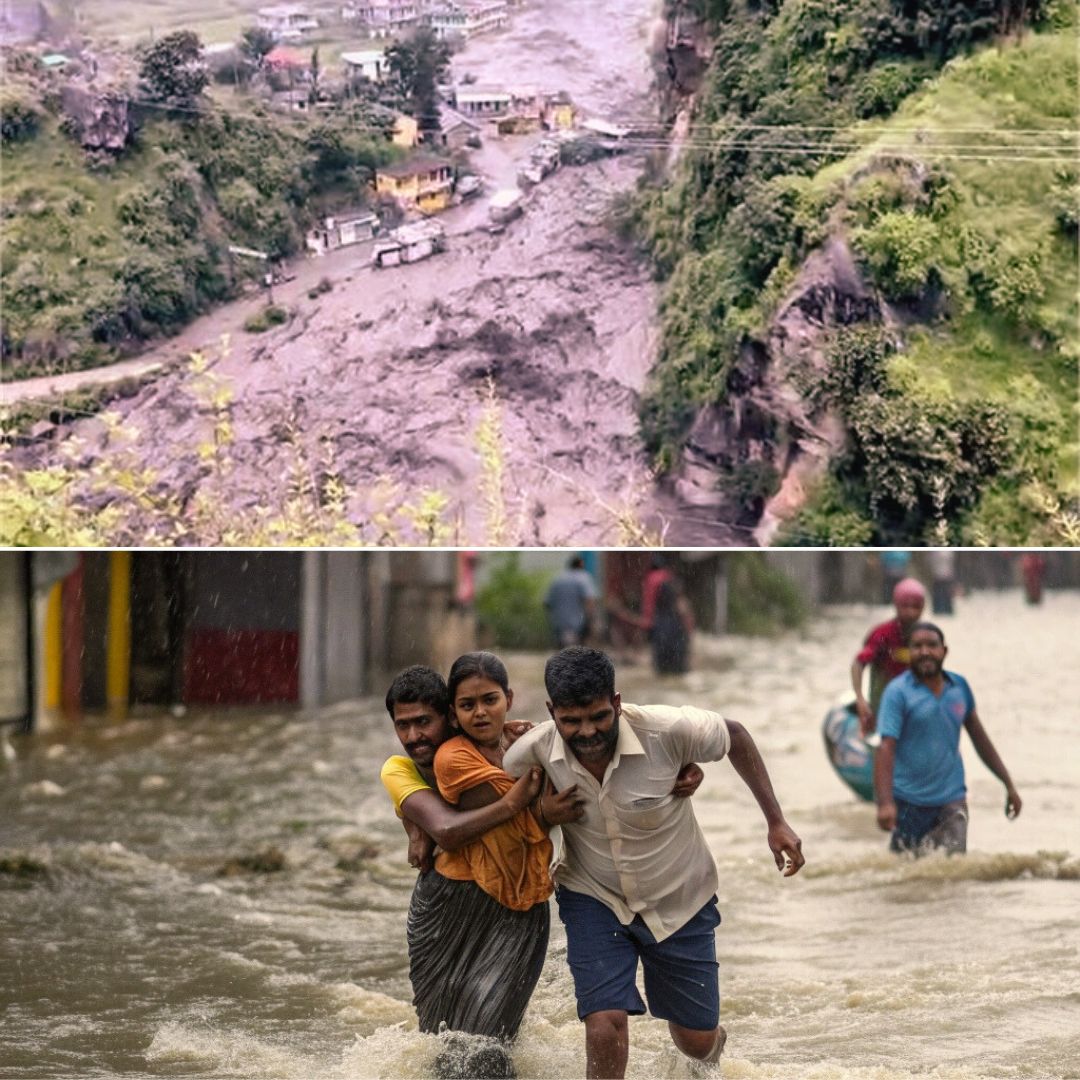A series of cloudbursts struck Himachal Pradesh during the night of August 13 and into August 14, 2025, triggering flash floods, washing away bridges, and forcing the closure of more than 325 roads, including two national highways. Hardest hit were the districts of Shimla, Kullu, and Lahaul-Spiti.
Though no loss of human life has been reported, widespread property and infrastructure damage has left several villages cut off, while relief and rescue operations by district authorities and the Army are ongoing. Weather alerts warn of further heavy rainfall in the coming days.
Impact: Roads Severed, Markets Evacuated
The cloudbursts led to cascading impacts across the state. Several bridges collapsed in Shimla and Lahaul-Spiti, including those in the Mayad valley, snapping access to villages like Koot, Kyav, Karpat, and Changut.
Residents of the affected areas were quickly evacuated by the administration, as washouts also destroyed a police post in Ganvi and a bus stand along with nearby shops in Shimla. In Kullu’s Nirmand subdivision, Bagipul Bazaar was promptly evacuated after the Shrikhand Mahadev cloudburst sent the Kurpan stream into flood.
Four vehicles and multiple cottages were washed away in Banjar subdivision’s Bathadh hill, while nearly ten bighas of farmlands have been reduced to debris in Lahaul-Spiti.
Across the state, over 325 roads, including NH-305 and NH-505, are closed, disrupting regular movement and emergency services alike. The looming danger also prompted orange and yellow weather alerts, with heavy to very heavy rainfall forecast for many regions through Sunday.
Emergency Response: Rapid Action and Resilient Communities
From the outset, local officials and the Indian Army launched coordinated rescue operations. In instances such as the cloudburst in Kinnaur’s Rishi Dogri Valley, four civilians stranded across the Sutlej River were supplied with essentials by aerial drones before being evacuated to safety.
In places like Ganvi and Karpat, quick evacuation prevented any casualties, though infrastructure loss was significant. Deputy Commissioner Kullu, Torul S Raveesh, stated, “Our teams responded immediately, areas downstream in Bagipul and Batahar were evacuated, and there were some property losses, but thankfully no loss of life.”
Residents praised the swift action, though anxiety remains as floodwaters continue to threaten their homes and fields.
Local communities have shown remarkable resilience, with neighbours aiding each other’s evacuation and sharing resources. Meanwhile, state authorities remain engaged in damage assessment and relief work, providing temporary shelters and food to displaced families.
Growing Climate Concerns: A Pattern of Extremes
This spate of destruction is not an isolated event, but the latest in a string of extreme weather incidents tied to this year’s monsoon. Since June 20, Himachal Pradesh has suffered property losses worth more than ₹2,000 crore, with over 120 recorded rain-related deaths and 30 people still missing.
As the monsoon enters a volatile phase, warnings about climate-driven intensification of extreme rainfall events are increasingly urgent. Communities, often dependent on fragile mountain infrastructure, face recurring threats, making investment in early-warning systems, resilient infrastructure, and sustainable land-use practices more imperative than ever before.
The Logical Indian’s Perspective
The current crisis highlights both the vulnerability and the unyielding spirit of Himachal’s people. As communities, officials, and rescue forces work round the clock, the episode drives home the need for proactive, long-term climate adaptation strategies and greater environmental stewardship.
The Logical Indian stands in solidarity with all affected, advocating for dialogue, empathy, and actionable plans that go beyond short-term fixes. How can we, as a society, co-create safer, more resilient communities in the face of intensifying weather extremes?
“𝙇𝙖𝙩𝙚 𝙉𝙞𝙜𝙝𝙩 𝙁𝙡𝙖𝙨𝙝 𝙁𝙡𝙤𝙤𝙙 𝙍𝙚𝙨𝙘𝙪𝙚 𝙊𝙥𝙨, 𝙆𝙞𝙣𝙣𝙖𝙪𝙧, 𝙃𝙞𝙢𝙖𝙘𝙝𝙖𝙡 𝙋𝙧𝙖𝙙𝙚𝙨𝙝”
— SuryaCommand_IA (@suryacommand) August 14, 2025
A sudden flash flood at Hojis Lungpa Nala, triggered by a cloudburst in Rishi Dogri Valley, left 4 civilians stranded & one injured across Sutlej River, in Kinnaur… pic.twitter.com/phpWKQeKmw











